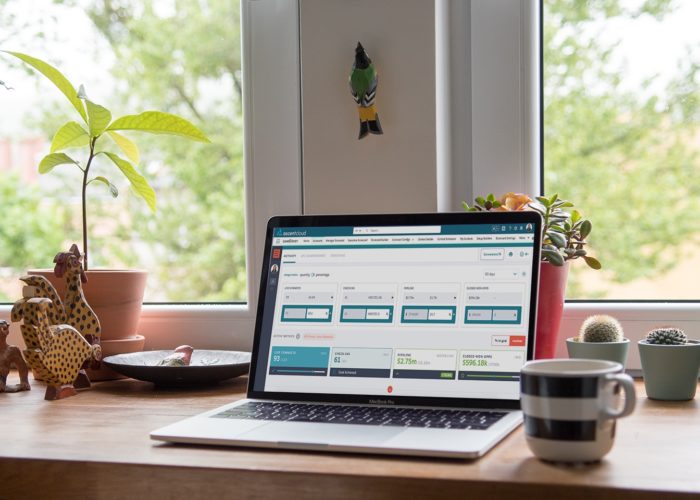 Some people quickly dismiss the idea of enterprise gamification. Because adding fun to your work environment means leaving some amount of structure behind, right? No, actually. If you want gamification to work in motivating your employees, it takes careful planning — and that should start with these 7 high-level rules:
Some people quickly dismiss the idea of enterprise gamification. Because adding fun to your work environment means leaving some amount of structure behind, right? No, actually. If you want gamification to work in motivating your employees, it takes careful planning — and that should start with these 7 high-level rules:
1. Entertain: Keep it interesting.
- This sounds basic, but it holds a lot of weight. When setting up competitions, simple actions like adding a fun theme or offering an interesting incentive will keep the fun going and your team engaged. (For more on this, watch the 15-minute webinar recap: “Run Contests Salespeople Want to Win.”)
2. Simplify: Pick only a few behaviors to motivate.
- In choosing which behaviors to motivate, less is definitely more. When it comes to sales contests, for example, we recommend sticking with one behavior per competition when possible and no more than three when one just won’t do. The simpler you make it, the easier it will be for your team to focus on what they should be doing.
3. Keep it top of mind: Share status updates regularly.
- Don’t give anyone on your team any chance to forget what they’re taking part in – whether that means communicating it by writing emails, reminding verbally or sending notes through a shared platform, like Salesforce’s Chatter. (For more on this, read: “Work Contests: What Your Team Needs to Know.”)
4. Offer real-time results: Allow participants to always know where they stand.
- How would it feel to play soccer with no scoreboard? How far into the game would you get before giving up on trying to keep score? Or, even if you didn’t give up, how much of your mind would be occupied with trying to remember the score when it could be focusing on what you could do to improve your game? Exactly our point.
5. Don’t depend on it: Encourage key behaviors at all times, but only layer on rewards to amplify them when needed.
- Gamification may offer a great fix, but it does not stand as a fix-all. Continue to focus on things like recognition and employee engagement, while understanding that gamification plays only one part in the grand motivation game. (For more on this, read: “Work Contests Can Better Your Recognition Game.”)
6. Make it social: Encourage team members to share how they’re doing — even if that leads to a little trash talking.
- College football fans love watching their team scrimmage against each other in the spring game, but think of how their engagement elevates when watching their team play the one they love to hate during the season. This isn’t to say that colleagues should become archrivals in the workplace, but a little friendly trash talking can go a long way in terms of gamification engagement.
7. Include real rewards: Virtual rewards like badging are fun, but include some tangible incentives from time to time, too.
- We preach often that competition itself provides a strong motivator; however, that doesn’t mean you should never offer tangible incentives. Even something as small as a $10 gift card can keep the game fun. (For more on this, watch the 15-minute webinar recap: “Sales Incentives: What You Need to Know to Really Motivate.”)
Once you have these basics down, you can — and should — dive deeper into each of them to find out what really works for your team. Play with offering different real rewards, explore various platforms for making contests social and figure out which communications keep competition top of mind. Then if someone dismisses gamification as unstructured fun in your presence, you’ll have the ROI stories that’ll prove them wrong.



